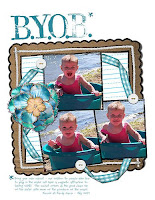The popularity that concrete polishing is receiving from thousands of its users worldwide is all because of the great benefits one can derive from it. Information from the television and in the internet is widely available where testimonies from users and actual applications can be seen. It is indeed remarkable that concrete polishing is the best flooring solution.
Concrete Polishing are not only used in indoor applications but it also penetrated the outdoor scene as well. Polished concrete floor in driveways are becoming the trends nowadays. Gone are the days when a driveway is only made of exposed aggregates and rough bricks and flagstones. Though equally beautiful, a polished concrete driveway seems to have a more sophisticated edge over bricks. Be prepared to receive commendations from people who see your beautifully polished concrete driveway.
The beauty of a garden patio can also be highlighted using concrete polishing. A polished concrete floor may be an excellent choice to be able to achieve a glossy and shiny finish for your patios. The popularity of polished concrete equals that of flagstones and bricks as the usual floor finish on garden patios.
Homes are not an exception when it comes to designing the floor with concrete polishing. The effects of a polished concrete floor in a home are remarkable and the benefits are numerous that one is very much tempted to use it so. The light from the ceiling reflects back from the shine of the polished concrete floor and thus the home is saved from electricity bills.
The same effects on the benefits on saving electricity are also seen from commercial and retail store outlets. We often see a polished floor surface in malls and boutiques and it is becoming the standard floor finish of these establishments. The high-gloss and shine makes every retail outlet attractive that sales had been boosting up since then.
Concrete Polishing are not only used in indoor applications but it also penetrated the outdoor scene as well. Polished concrete floor in driveways are becoming the trends nowadays. Gone are the days when a driveway is only made of exposed aggregates and rough bricks and flagstones. Though equally beautiful, a polished concrete driveway seems to have a more sophisticated edge over bricks. Be prepared to receive commendations from people who see your beautifully polished concrete driveway.
The beauty of a garden patio can also be highlighted using concrete polishing. A polished concrete floor may be an excellent choice to be able to achieve a glossy and shiny finish for your patios. The popularity of polished concrete equals that of flagstones and bricks as the usual floor finish on garden patios.
Homes are not an exception when it comes to designing the floor with concrete polishing. The effects of a polished concrete floor in a home are remarkable and the benefits are numerous that one is very much tempted to use it so. The light from the ceiling reflects back from the shine of the polished concrete floor and thus the home is saved from electricity bills.
The same effects on the benefits on saving electricity are also seen from commercial and retail store outlets. We often see a polished floor surface in malls and boutiques and it is becoming the standard floor finish of these establishments. The high-gloss and shine makes every retail outlet attractive that sales had been boosting up since then.
About the Author:
Concrete Polishing wonders are everywhere around us. We often see concrete polishing in both indoor and outdoor applications. Mercie Hallow suggets to try researching more on how to spruce up your outdoor setting with concrete polishing today.

